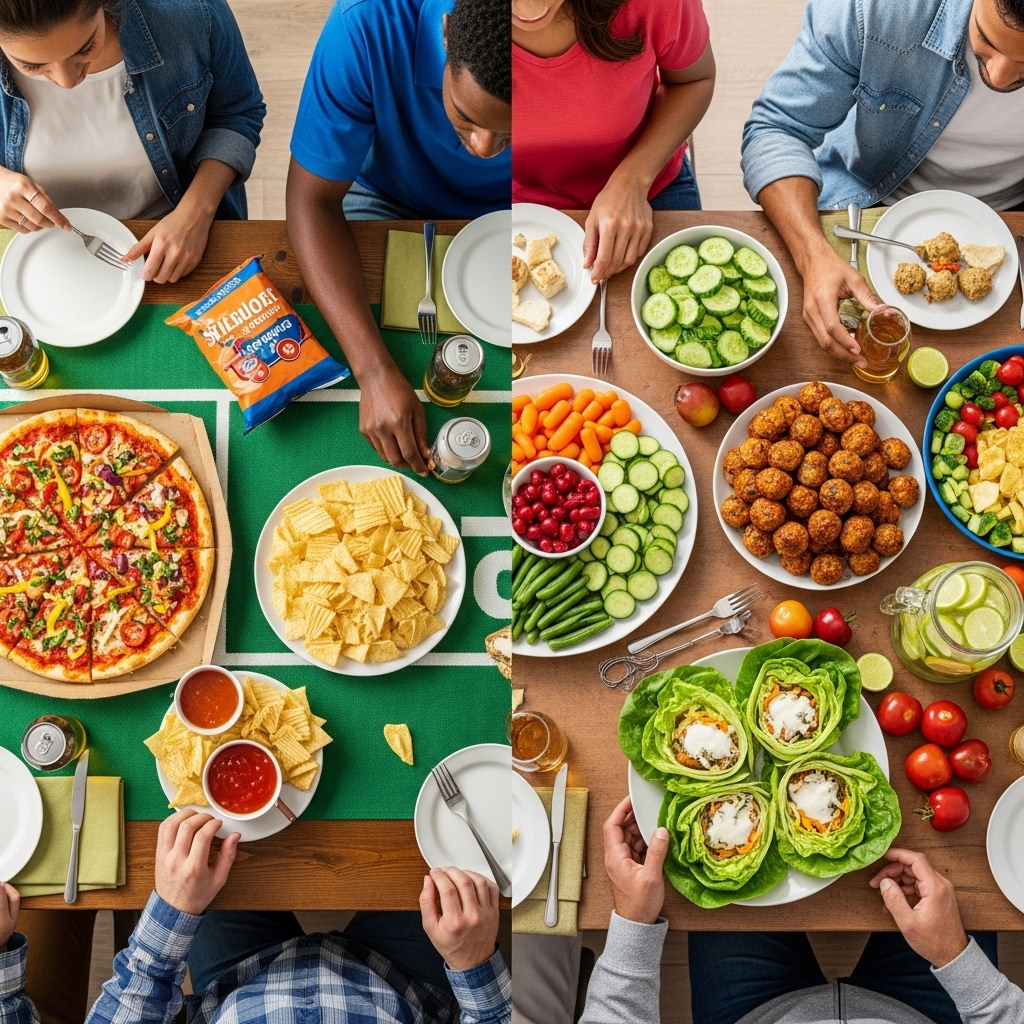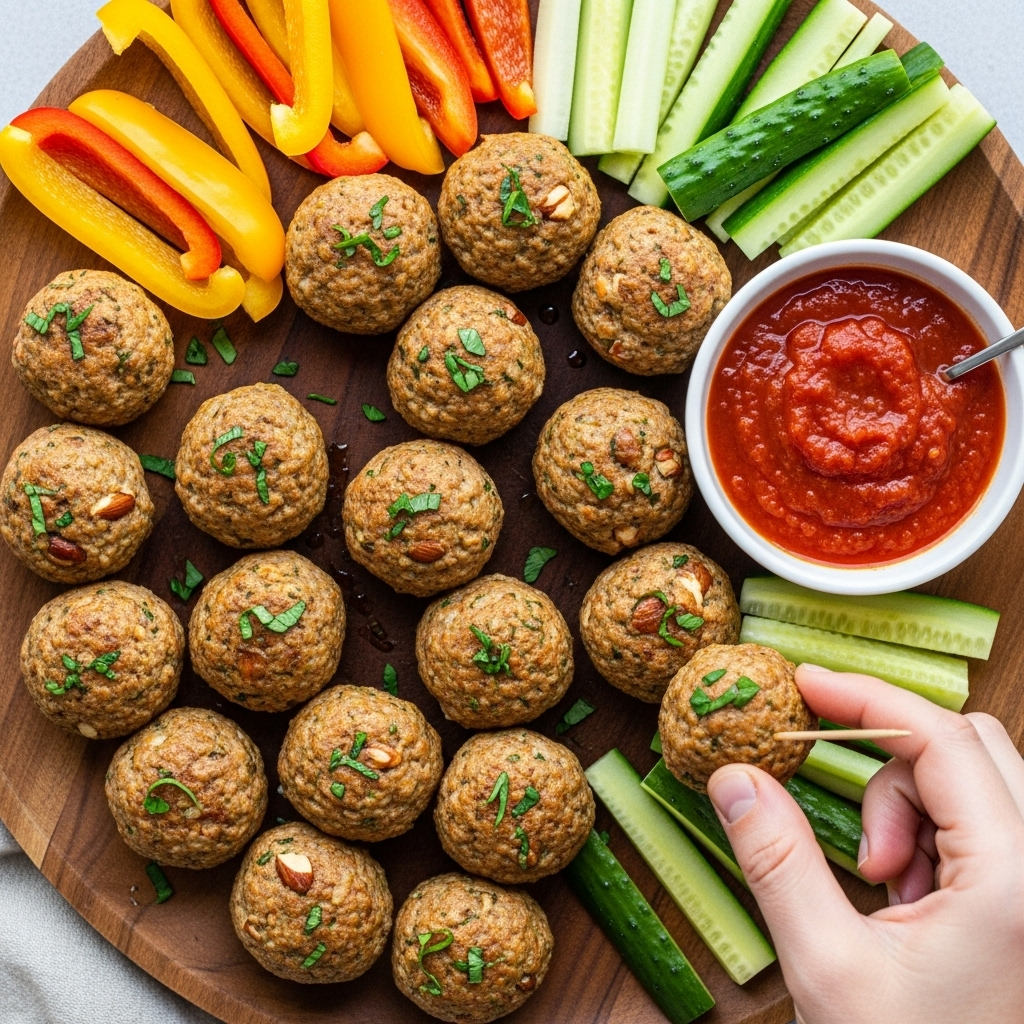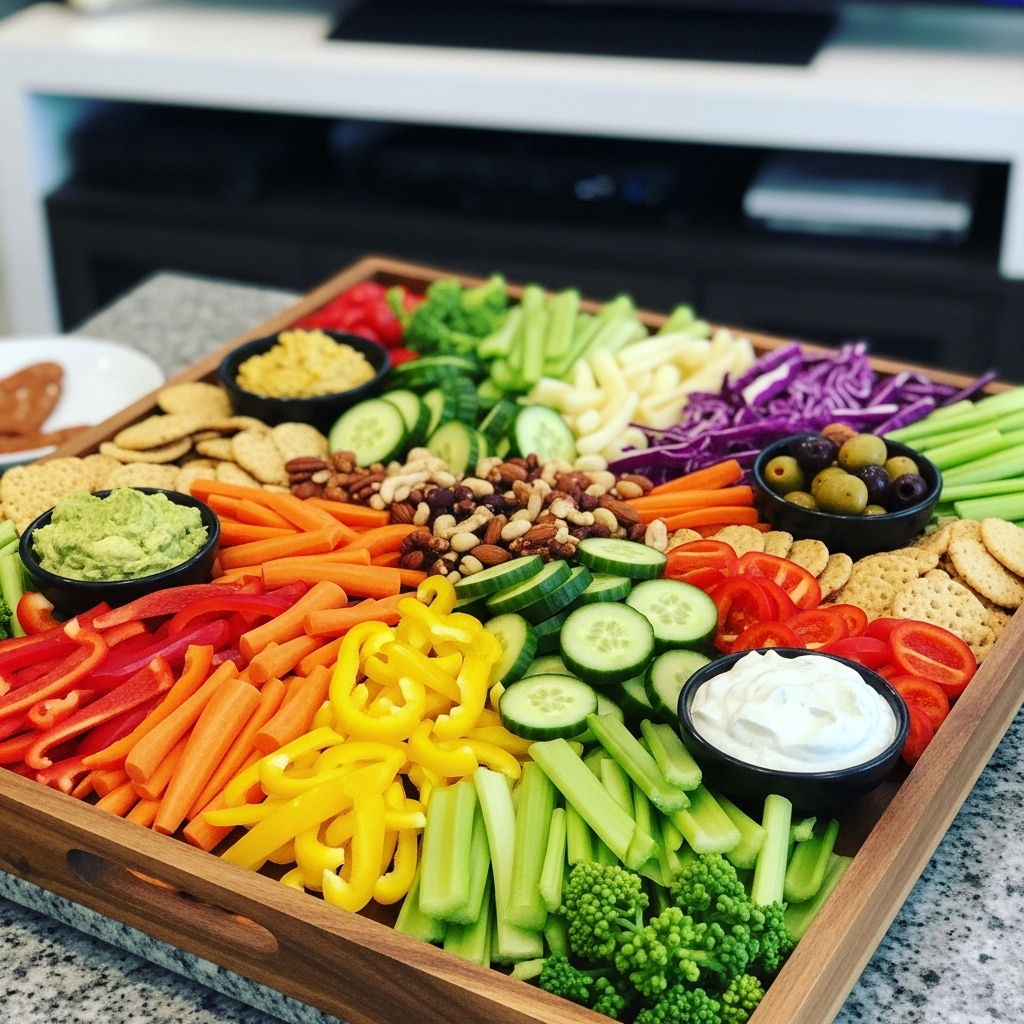For many of us, game day isn't just about the matchup on the field – it's about the spread on the table. Those Sunday football gatherings or tailgating parties often come with a particular menu that's as traditional as the coin toss. But if we're honest with ourselves, the standard game day fare—loaded with refined carbs, added sugars, and excessive alcohol—can lead to our own fourth-quarter collapse in terms of energy levels and metabolic health.
As someone who's passionate about optimizing metabolic health while still enjoying life's pleasures, I believe we don't need to choose between enjoying social traditions and supporting our long-term health. With some strategic substitutions and mindful approaches, we can transform the typical game day menu from a metabolic penalty into a nutritional touchdown.
The Metabolic Impact of Traditional Game Day Foods
Before we dive into solutions, let's understand what we're up against. The typical game day spread presents several metabolic challenges:
Alcohol consumption goes beyond just empty calories. Ethanol is processed differently than other nutrients—your liver prioritizes metabolizing alcohol over everything else. This means:
- Temporarily halted fat burning as your body deals with what it perceives as a toxin
- Impaired glucose regulation, potentially leading to reactive hypoglycemia
- Compromised judgment around food choices (we've all grabbed that extra slice of pizza after a few drinks)
- Disrupted sleep quality, which further impacts insulin sensitivity the next day
Condiments and sauces seem innocent in small quantities, but they're often metabolic saboteurs:
- Commercial BBQ sauces can contain up to 16g of sugar per serving
- Ketchup is essentially tomato-flavored sugar paste (4g sugar per tablespoon)
- Many dressings contain inflammatory seed oils and hidden sugars
- Artificial food dyes and preservatives may negatively impact gut health, which is increasingly linked to metabolic function
Refined carbohydrates form the foundation of traditional game day eating:
- White flour tortilla chips, burger buns, and pizza crusts cause rapid glucose spikes
- The lack of fiber in refined grains means faster digestion and less satiety
- These foods often trigger cravings for more of the same, creating a cycle of overeating
- The combination of refined carbs with high-fat foods (think nachos) creates a particularly challenging metabolic environment
When we consume these foods together—washing down a slice of pizza and wings with beer, followed by a sugary dessert—we're creating the perfect storm for glucose dysregulation, inflammation, and the energy crash that leaves us nodding off before the fourth quarter even begins.

Building a Better Game Plan: Metabolically Friendly Alternatives
The good news is that with some thoughtful substitutions and homemade alternatives, we can maintain the spirit of game day eating while supporting our metabolic health. Here are some strategies and specific recipes to consider:
Rethink Your Foundation
Instead of building meals on refined carbs, use these alternatives:
- Leafy greens as the base for loaded toppings
- Cabbage leaves as taco or wrap alternatives
- Cauliflower as a versatile substitute for rice, pizza crust, or even wing coating
- Almond flour or coconut flour for baking needs
Fajita Power Bowl
Rather than traditional fajitas with white flour tortillas, build a bowl with:
- Base of mixed greens or cauliflower rice
- Grass-fed beef or pastured chicken
- Bell peppers and onions sautéed in olive or avocado oil
- Toppings: avocado slices, pumpkin seeds, cilantro, lime juice
- Optional: small amount of full-fat sour cream or Greek yogurt
This provides protein, healthy fats, fiber, and significantly fewer blood sugar-spiking carbs than traditional fajitas.
Turkey-Almond Meatballs
Replace breadcrumb-filled, sugary-sauce covered meatballs with:
- Ground pasture-raised turkey
- Almond flour instead of breadcrumbs
- Eggs as a binder
- Herbs and spices (parsley, oregano, garlic)
- Serve with a sugar-free marinara or alongside a vegetable platter
These provide lean protein with moderate fat content and minimal impact on blood glucose.

Reimagine Classic Favorites
Instant Pot Carnitas Lettuce Wraps
Transform traditional tacos by:
- Slow-cooking pork shoulder with cumin, oregano, citrus, and chilis
- Serving the tender meat in butter lettuce cups instead of tortillas
- Topping with avocado, pickled red onions, cilantro
- Optional: small sprinkle of cotija cheese
Metabolic-Friendly Chili
Modify traditional chili by:
- Using a mix of grass-fed ground beef and pasture-raised pork
- Including beans for fiber (which slows glucose absorption)
- Maximizing vegetable content with bell peppers, onions, tomatoes
- Skipping added sugar (common in many recipes)
- Serving with avocado and full-fat Greek yogurt instead of corn chips
Buffalo Cauliflower Casserole
Reimagine buffalo chicken dip as:
- Shredded pasture-raised chicken mixed with cauliflower florets
- Homemade buffalo sauce using sugar-free hot sauce and grass-fed butter
- A mixture of full-fat cream cheese and Greek yogurt for creaminess
- Serving with sliced vegetables instead of chips
Don't Forget Dessert
Dark Chocolate Tahini Brownies
Satisfy sweet cravings with:
- Almond flour base instead of wheat flour
- 85% or darker chocolate with minimal added sugar
- Tahini (sesame paste) which may improve insulin sensitivity
- Natural sweeteners like monk fruit in minimal amounts
Easy Wins with No Cooking Required
The Ultimate Vegetable Board
When time is short:
- Arrange abundant sliced vegetables (bell peppers, cucumbers, jicama, celery)
- Include high-quality olives and a small amount of aged cheese
- Add nuts like macadamias or almonds
- Make simple dips from avocado, Greek yogurt, or olive oil bases
- Include flax crackers or almond flour crackers as a chip alternative

Practical Implementation: Making It Work on Game Day
Changing habits, especially those tied to traditions like sports viewing, doesn't happen overnight. Here are some practical approaches to make the transition successful:
The 80/20 approach: If completely overhauling your game day menu feels overwhelming, start by ensuring 80% of your offerings follow these metabolic-friendly guidelines, while allowing 20% of traditional favorites in moderation.
Alcohol strategy: If you choose to drink, consider:
- Lower-carb options like dry wine or spirits with soda water
- Alternating alcoholic beverages with water
- Setting a pre-determined limit
- Having alcohol with food (never on an empty stomach)
- Stopping consumption well before bedtime to minimize sleep disruption
Preparation is key: Most game day metabolic disasters happen when we're unprepared and hungry. Having ready-to-eat metabolically friendly options prevents defaulting to whatever processed snacks are available.
Focus on abundance, not restriction: Create such an abundant spread of colorful, delicious metabolic-friendly options that no one feels deprived. The vegetable board mentioned above is perfect for this—it should be the most visually impressive item on the table.
Track to learn: If you're using a continuous glucose monitor or the Levels app, game days provide valuable data about how your body responds to different foods and combinations. Use this information as a learning opportunity rather than a source of stress.
Conclusion: Winning at the Metabolic Game
The traditions we build around sporting events should enhance our lives, not detract from our health. By reimagining game day fare with a metabolic lens, we can maintain the communal joy of sharing food while watching sports, without the energy crashes, brain fog, and long-term health consequences of the standard approach.
Remember, metabolic health isn't about perfection—it's about making informed choices most of the time. One game day of less-than-optimal eating won't ruin your metabolic health, just as one day of perfect eating won't fix it. The goal is building sustainable habits that allow you to enjoy life's pleasures while supporting your long-term health.
So as you prepare for the next big game, consider which of these strategies might work for your gathering. Your guests will likely appreciate feeling energized throughout the game rather than slumping into a food coma before the final score. And your future self will thank you for the investment in metabolic health that pays dividends far beyond the current season.
References:
-
Ludwig DS, Aronne LJ, Astrup A, et al. The carbohydrate-insulin model: a physiological perspective on the obesity pandemic. Am J Clin Nutr. 2021;114(6):1873-1885. doi:10.1093/ajcn/nqab270
-
Boden G, She P, Mozzoli M, et al. Free fatty acids produce insulin resistance and activate the proinflammatory nuclear factor-kappaB pathway in rat liver. Diabetes. 2005;54(12):3458-3465. doi:10.2337/diabetes.54.12.3458






